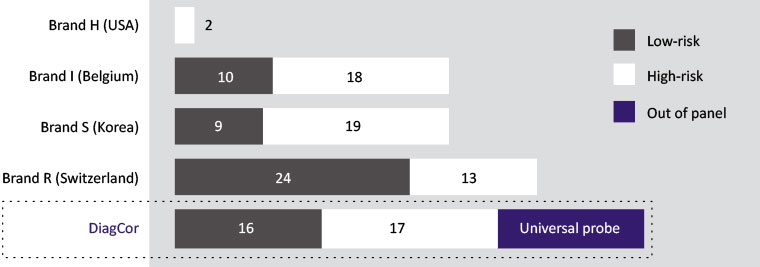
Please check your inbox.

As the chart below reveals, a study performed in Hong Kong found regional variations among types. It also uncovered a significant prevalence of rare HPV types.
Distribution of genotypes in 1,643 Hong Kong women

Rare types must be identified early. Otherwise patients with persistent HPV infections who previously tested negative cannot be identified when new high-risk subtypes are discovered.
Most HPV test solutions only identify a limited set of high-risk HPV types. This means many patients infected with HPV are reported negative.
Unfortunately, when new high-risk subtypes are discovered, patients with persistent HPV infections who previously tested negative cannot be identified.
DiagCor’s specialist technology and simple lab protocols excel at producing accurate medium-resolution analyses of various types of genetic material. We also offer low-resolution solutions.
Emerging evidence suggests the existence of new and potentially dangerous HPV variants in addition to 16 and 18.
Analysis using less comprehensive testing equipment incorrectly reported negative samples from patients with ASCUS and CIN1. DiagCor universal probe analysis on the same specimens
correctly identified HPV infection.

The DiagCor test has discovered rare types and variants (detected by no other test), which have evidently led to cell abnormality.
Attempting to increase the clinical sensitivity of HPV assays at the expense of specificity is misguided. A small gain in sensitivity has the adverse effect of a dramatic increase in the number of
false positives.
Comprehensive testing has proved the accuracy of the GenoFlow HPV Array Test Kit. It’s one of the few solutions capable of achieving complete 100% proficiency in WHO Labnet studies.
GenoFlow HPV Array Test Kit accuracy is certified by trusted third parties

With universal probe, only DiagCor’s GenoFlow HPV Array Test Kit accurately detects and identifies all these types: